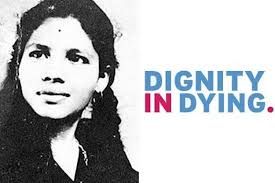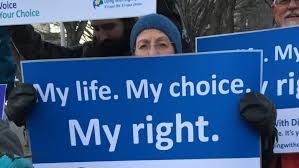The Right To Die With Dignity
Feb 18, 2019 • 35 views
With the recent death of 93-year-old poet Gopal Das Neeraj on July 19, 2018, the subject of euthanasia along with its acceptance by our Indian society has come under the spotlight again. Euthanasia, also known as mercy killing is the intentional and painless taking of the life of any person, by act or omission for compassionate purposes. Euthanasia is categorized in different ways, which include voluntary, non-voluntary, or involuntary. As recently, euthanasia is the most active area of research in contemporary bioethics. In some countries, there is a divisive public controversy over the moral, ethical, and legal issues of euthanasia. The need for a change in euthanasia law was triggered by the famous Aruna Shaubaug case. Aruna was on the vegetative state for 42 years. On May 18, 2015, Shanbaug died of severe pneumonia.

On 7 March 2018, in a milestone verdict, expanding the ’Right to Life’ the Supreme Court of India legalized passive euthanasia and approved “living will” to provide a dignified way out by means of withdrawal of life support to patients terminal or in a permanent vegetative state. Yet, forms of active euthanasia, including the administration of lethal compounds, are illegal and a crime under section 302 and 304 of the IPC. Many people make a moral distinction between active and passive euthanasia. They think that it is acceptable to withhold treatment and allow a patient to die, but that it is never acceptable to kill a patient by a deliberate act.

Although the uncertainty over the assumption that whether euthanasia can be misused, for instance, to take over family property, still exists. There is no doubt that there are plus points as well, like for example in addition to patient’s freedom from suffering, this will also encourage organ transplantation and reduce the excess burden of the caregiver. Right to life is the Fundamental and Permanent feature of the Indian Constitution and over the years Supreme Court has expanded its dimensions and horizons giving it more meaning and applications. Right to life can be taken away from the person only in accordance with the process(lute established by law. Along with this, ‘Right to live with dignity' is also a part of Right of Life.

This is a welcome decision by the Supreme Court hundreds of people who are in ‘Vegetative state’will get their voices heard and they can exercise their ‘Right to live With dignity’ in true respect. All the stakeholders like Doctors, High Court magistrates, Relatives and the person himself must be very rational and 10 logical with the decision of making ‘living will’ as it includes the Vital decision surrounding a person’s life, Rules and Regulations must be such that there is no ground of misuse of the document of ‘Living Wills’. The draft law for terminally ill patients must be passed as early as possible incorporating all the key decision points of the Supreme Court’s decision. More light will be shed in the coming years but for today, Mr Neeraj definitely chose his death before death could choose him.
